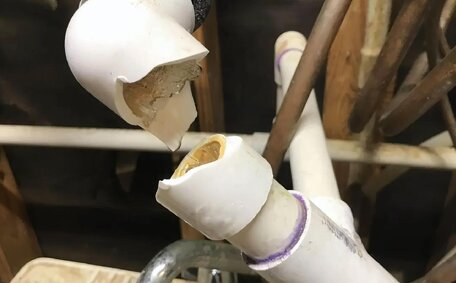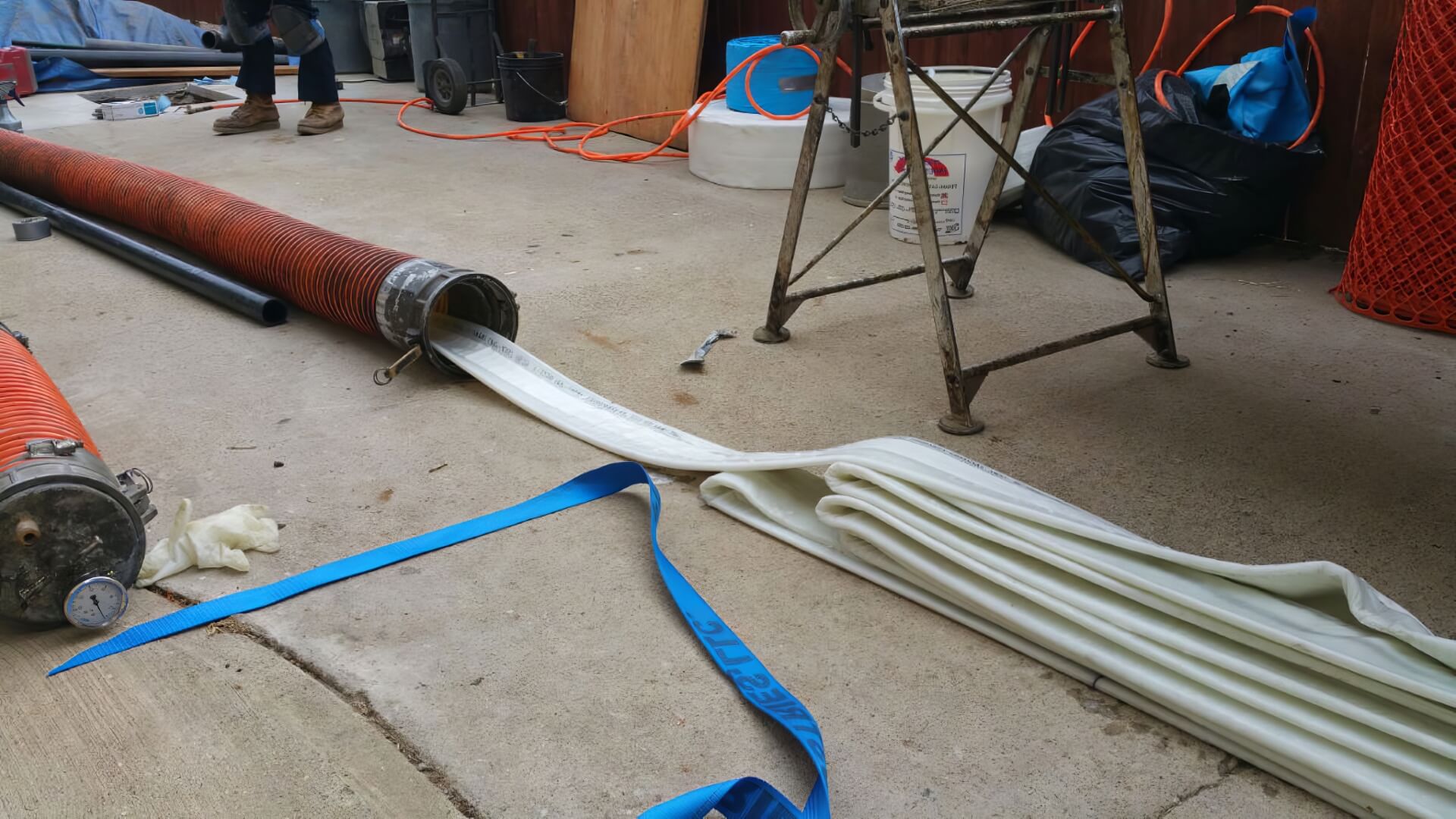Introduction to Gas Cylinder Storage Safety
Correct storage of gas cylinders is paramount for health and safety, preventing leaks and reducing the risk of fire and injury. Castle Hill Plumbing, based in Sydney, specialises in secure storage and handling of gas cylinders, ensuring both compliance and safety.
This article covers essential topics including:
- Selecting appropriate locations for gas cylinder storage to ensure safety and compliance
- Securing cylinders to safeguard workplace health by preventing them from tipping over
- Segregating by hazard type or gas
- Ensuring adequate ventilation
Following proper control measures and safety precautions when storing gas cylinders properly will help mitigate risks. Our skilled team can guide you on compliant storage of compressed gas using purpose-built cages or cabinets.
Selecting a Safe Location
Understanding the intricacies of storage areas is vital for gas cylinder safety. Proper gas cylinder storage requires placement in outdoor or ventilated spaces, clear of ignition sources, vehicle traffic, and unrestricted public access.
The storage area you pick for gas cylinders, which can be a cornerstone of safety, should be clean, dry and shielded from the elements while still permitting ventilation. Gas cylinders should be kept in an upright position, not on their sides, avoiding storage below ground level, such as in basements or pits, as leaking gas can accumulate in these spaces.
Various gas bottles, including LPG cylinders, must be segregated by hazard classification, ensuring a minimum 3-metre separation for safe storage. For oxygen cylinders, storage practices like separating flammable gases such as propane should include using an approved fireproof partition to segregate them from oxidising gases. Toxic and corrosive gases require dedicated storage areas.
Key considerations for effective signage include: safe handling details and critical safety information should be exhibited clearly, denoting the type of gas, potential risks, and emergency contact details. Conducting regular risk assessments involve thorough inspection and maintenance of gas cylinder storage areas for dangerous goods such as safely handled gas containers.
By adeptly mastering the handling gas cylinders procedures and storage, and selecting suitable locations for their containment, the risk of accidents can be greatly minimised.
Properly Securing Cylinders
Ensuring your storage facility has measures to secure gas cylinders, preventing falls and tip-overs, is critical. Failure to handle gas cylinders securely can cause cylinders can cause leaks, explosions, or injuries if knocked over or damaged.
Prevent cylinder falls by securing them upright with chains or straps to a solid structure. Storage racks designed for holding gas cylinders are also very effective for securing them in place.
Storage racks should meet AS 4332 standards, featuring slots and restraints to maintain cylinders in a fixed, upright position.
Consider additional safeguards by housing cylinders in a gas bottle cage or secure cabinet. Ensure stacking of empty cylinders does not end up exceeding one high and maintain valve protection with screwed-on valve caps or protective collars to prevent physical impact damage.
Check cylinder restraints regularly for signs of wear or looseness. Immediately contact a specialist for a safe gas cylinder solution if you notice any issue with your gas cylinders, or if you identify new hazards—never take risks or cut corners with hazardous compressed gases.
Ensuring Adequate Ventilation
Indoor storage areas for gas cylinders require adequate ventilation to ensure safety. Gas leaks or accidental releases should never result in a dangerous buildup of storage flammable gases inadequately, turning toxic or asphyxiating if ventilation is not ample.
AS 4332 dictates that indoor gas cylinder storage areas should have both high and low-level ventilation for proper air flow. There should be permanent, unobstructed ventilation openings that collectively equate to no less than 50% of the combined floor and wall area adjoining the space.
This allows any leaked gas, which might be heavier than air, to dissipate instead of accumulating in pockets.
Certain areas might necessitate mechanical exhaust systems providing a minimum of 6 air changes per hour. Confirm that exhaust vents discharge gas to an unoccupied, open-air space rather than into the building.
Assess the positioning of outdoor gas storage areas to maximise natural airflow and ensure good ventilation for the safety of all gas cylinder types. Seek specialist advice to check out if your ventilation measures are adequate for your type and quantity of compressed gas cylinders.
Regularly examine storage lpg areas for any early indications of gas leaking or dangerous buildups. Immediately contact emergency services on 000 if a leak is suspected and evacuate the site while ensuring no sources of ignition are present.
Proper Signage and Labeling
Clear signage and labels are essential for identifying potential hazards and emergency details when storing pressurised gases. AS 1319 outlines the requirements for labelling of gas cylinders based on the type of gas.
Signs indicating hazardous chemicals, like flammable gas and oxidisers, must be prominently displayed at storage area entry points. The signs should articulate how to store the type(s) of gas, precautions for handling cylinders safely, no smoking or ignition source cautions, PPE necessities, and emergency contact digits.
Verify that each gas bottle has a supplier-provided label with crucial information such as gas name, hazards, volume, and test date. Cylinder colour coding can also indicate the gas type.
Install additional signs outlining emergency actions like alarm activation, source of ignition shutdown, and area evacuation.
Proper signage and labelling ensures risks are effectively communicated to workers, emergency personnel and others so appropriate precautions are taken when handling or storing gas cylinders.
Handling and Connecting Cylinders
Grasping precisely how handle gas cylinders is critical to forestall damage or leaks. Cylinders must be transported on proper trolleys and maintained in an upright position. Only pick up small cylinders by the body, never by valves or regulators.
Before using a gas cylinder, confirm it matches the gas type your equipment requires. Ensure the cylinder valve is kept closed when not in use and replace dust caps. Open valves slowly and close immediately if leaks are suspected.
Use approved hoses and fittings for the specific gas type. Inspect hoses for cracks or damage and ensure connections are tight. A leak detection solution can assist in identifying any connection points leaking from your gas cylinder.
Implementing flashback arrestors and check valves becomes essential in the handling and storage of gas cylinders to avert reverse gas flow perils. Place cylinders where protected from heat, sparks and static electricity when in use. Always keep the cylinder valve accessible so gas flow can be stopped quickly in an emergency.
Adhering to correct cylinder handling and connection ensures the safe operation of gas systems. Contact a specialist like Castle Hill Plumbing if ever unsure about working with hazardous compressed gas cylinders.
Transportation and Vehicle Storage
Careful planning is necessary to transport gas using vehicles and to ensure gas cylinders are stored and handled correctly, preventing leaks, explosions or mishaps.
Gas cylinders should stand upright in cargo areas with straps, brackets, or restraints to secure them against vehicle motion. Prevent cylinders from tipping over or rolling around in vehicles cargo areas. Separate and restrain individual cylinders.
Keep cylinder valves closed and protected during transport in areas where the presence of gas cylinders in vehicle cargo areas is open to airflow, ensuring adequate ventilation instead of transporting in closed boot spaces. Open windows or run ventilation in enclosed vehicles.
Check for gas leaks upon unloading cylinders of any size to confirm safe gas use practices have been followed in areas where these procedures are paramount. Do not leave in hot vehicles as temperature rises can increase cylinder pressure. Position cylinders no more than at least 20 feet from buildings, ignition sources, and public areas after unloading.
By properly securing gas cylinders, ensuring ventilation and taking gas-specific precautions when transporting in vehicles, the risks of leaks, fires or uncontrolled releases can be effectively reduced.
Emergency Response Planning
An in-depth emergency response plan is crucial for handling accidents and leaks involving LP gas cylinders safely. The plan should cover immediate actions like raising alarms, controlling ignition sources and evacuating the area.
Safety equipment, including gas detectors, fire extinguishers, first aid kits, and eye wash stations, must be readily accessible. Assign key personnel to coordinate emergency responses and ensure all staff are trained in procedures.
If a type of gas leak occurs, do not enter the area; the storage area should only be entered with appropriate breathing equipment and PPE. Eliminate any nearby ignition sources if the gas is flammable.
The plan should include details like emergency contact numbers, incident reporting procedures, location of isolation valves and switches, and arrangements for resuming normal operations once an emergency is resolved.
Engage with the gas association for frequent emergency drills, testing preparedness against high pressure gas accidents and updating procedures as needed. By planning ahead, gas cylinder accidents can be handled in a systematic way to maximise safety.
Inspection and Maintenance
Routine inspection and maintenance of gas cylinders prevent accidents or leaks, thereby ensuring health and safety.
A thorough inspection must include:
- Cylinder and storage area condition - check cylinders and valves for damage, leaks or corrosion. Ensure storage racks, restraints and ventilation are well-maintained.
- Signage, labels and markings - replace any faded signs. Check cylinder labels are legible and markings indicating cylinder contents are clear.
- Safety equipment - inspect fire extinguishers, gas detectors, eye wash stations, PPE, etc. Ensure equipment is accessible and functional.
- Compliance with standards - storage areas and procedures should align with AS 4332 and other relevant codes.
Inspections should be completed by a licenced gas technician at least annually under most regulations. Keep records of inspections, noting if cylinders are full empty, and any actions taken.
Issues requiring immediate attention like leaks or damaged cylinders should also be identified through routine visual checks when accessing the storage area.
Proactive maintenance and following manufacturers’ cylinder test/replacement interval recommendations helps prevent accidents associated with aged, unsafe or non-compliant cylinders.
Compliance with Standards
Safeguarding gas cylinder storage depends on adherence to Australian standards and industry codes of practice, including:
- AS 4332 - The storage and handling of gases in cylinders
- AS/NZS 1596 - The storage and handling of LPG gas
- AS 4839 - The safe use of portable and mobile oxy-fuel gas systems for welding, cutting, heating and allied processes
- HSE CoP HS(G)51 - Storage of flammable liquids in containers
- HSE CoP HS(G)40 - Safe storage and handling of gases in cylinders
These guidelines stipulate requirements for storage location, restraint systems, separation distances, signage, ventilation and other critical factors in reducing risks; find out more about storing hazardous compressed gases like propane, acetylene or LPG.
Design your cylinder store with spaces and processes that follow Australian standards to greatly reduce the risk of leaks, explosions, fires, or injuries.
The team at Castle Hill Plumbing stays up-to-date with the latest gas storage codes of practice and standards. Contact us today to learn more about our expertise in the compliant, safe storage and handling of gas cylinders.






